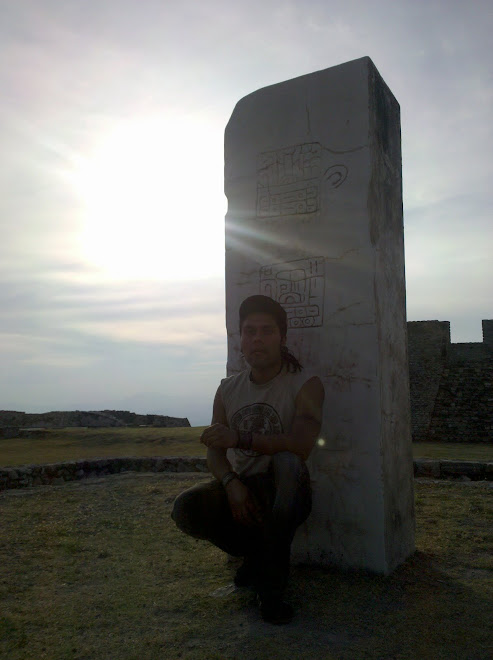








Tenayuca, meaning the Place Where Walls Are Made, was a Chichimec city founded in 1224 C.E., and was located northwest of Mexico City. Tenayuca was an enclosed and fortified city founded by king Xolotl, and was the capital of the Chichimecs until a later king, Quinatzin moved to Tetzcoco. It had six major construction phases from 1224 to 1507 C.E. Aztec influence was visible by 1325 C.E. Although its temple was built during the Post-Classic period, archaeological materials found inside the temple indicate that Tenayuca was inhabited long before. The early phases of Tenayuca’s pyramid construction began after the fall of Tula (1200 C.E.) and before the founding of Tenochtitlán. It is believed by some scholars that the Great Temple of Tenochtitlán was modeled after the great temple of Tenayuca. The double-pyramid was four-tiered, faced the plaza, and was ornamented with rows of serpents surrounding all three sides of the base, forming a coatepantli (serpent wall) inspired by the one in Tula. As the snakes in the coatepantli have a spiral-like crest in their heads, they are identified as xiuhcoatls, or fire serpents, the weapon of Huitzilopochtli. This symbol signified an association of Tenayuca with sun god cult and fire renewal. The gods Huitzilopochtli, Tlaloc, Mixcoatl, Itzpapalotl, Chicomecoatl, and Coatlicue were worshiped there.
The Pyramid
Tenayuca’s pyramid is composed of several superimposed layers . All layers follow the same system of construction, patterns of decoration, and layout. The earliest
structure has carved stone slabs facing a rock core. There after, the current pyramid would be used as a core for the next successive layering/construction phase . Slabs were coated with cement made from sand, lime, and crushed tezontle. Color would then be applied. Carved stone serpent heads, year glyphs, shields, knives, and other symbols were used for decoration. The low platform that projected from the pyramid was ornamented with bones and sculpted crossed skulls.
Wall of Serpents
Known as the coatepantli, the Wall of Serpents, covers all three sides of the pyramid’s platform . It was found that there are 43, 50 and 45 serpent heads on the north, east and south walls . Greenish blue paint is visible on the snakes’ bodies of the south side and half of the bodies on the east side. Their bodies’ scales were outlined in black. The north wall’s serpents were garnished in black with white ovals. Snakes’ rattles were detailed by carving three stepped planes at the tip of their tails. It is believed that the color schemes used on the bodies were related to the symbolism of sun worship.
On the north and south ground level of the pyramid, coiled serpents were positioned. The heads of stone are ornamented with a spiral crest that identifies the fire serpent as a xiuhcoatl, which is associated with fire renewal, sun worship, and the 52-year calendar . The stone heads were decorated with bulging dots that are believed to symbolize stars.
The rocky stairway has visible engravings from the last structural addition. A year glyph, a linked rectangle and triangle, banners, concentric circles, a knife, turquoise, chimallis or shields, and precious stones are still visible. The carvings do not appear to have a systematic order.
Tomb-Altar
Located in front of the pyramid, there is a combined tomb and altar with colored paintings of crossbones and skulls inside. The outside has carved stone reliefs illustrating skulls


No comments:
Post a Comment